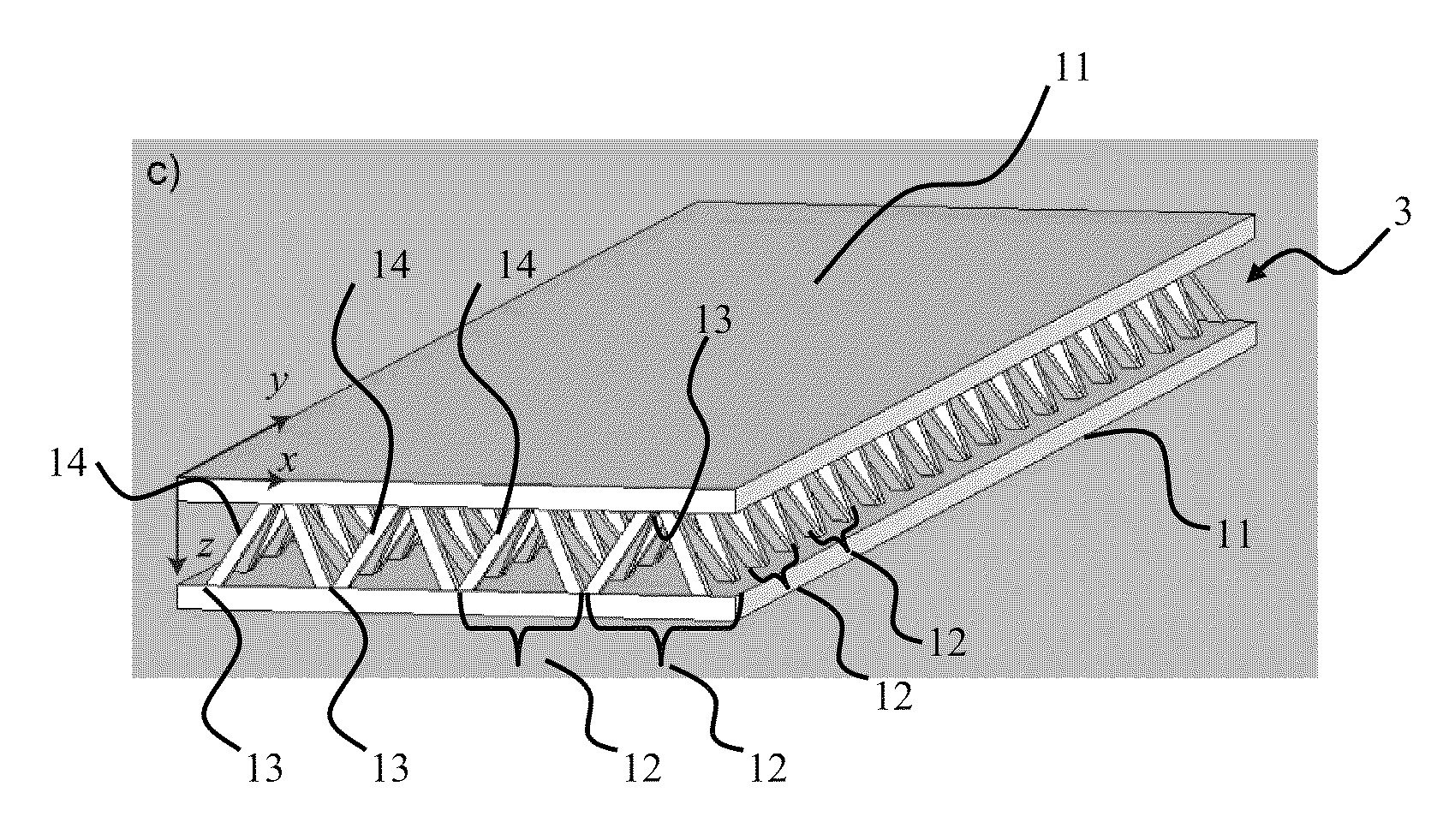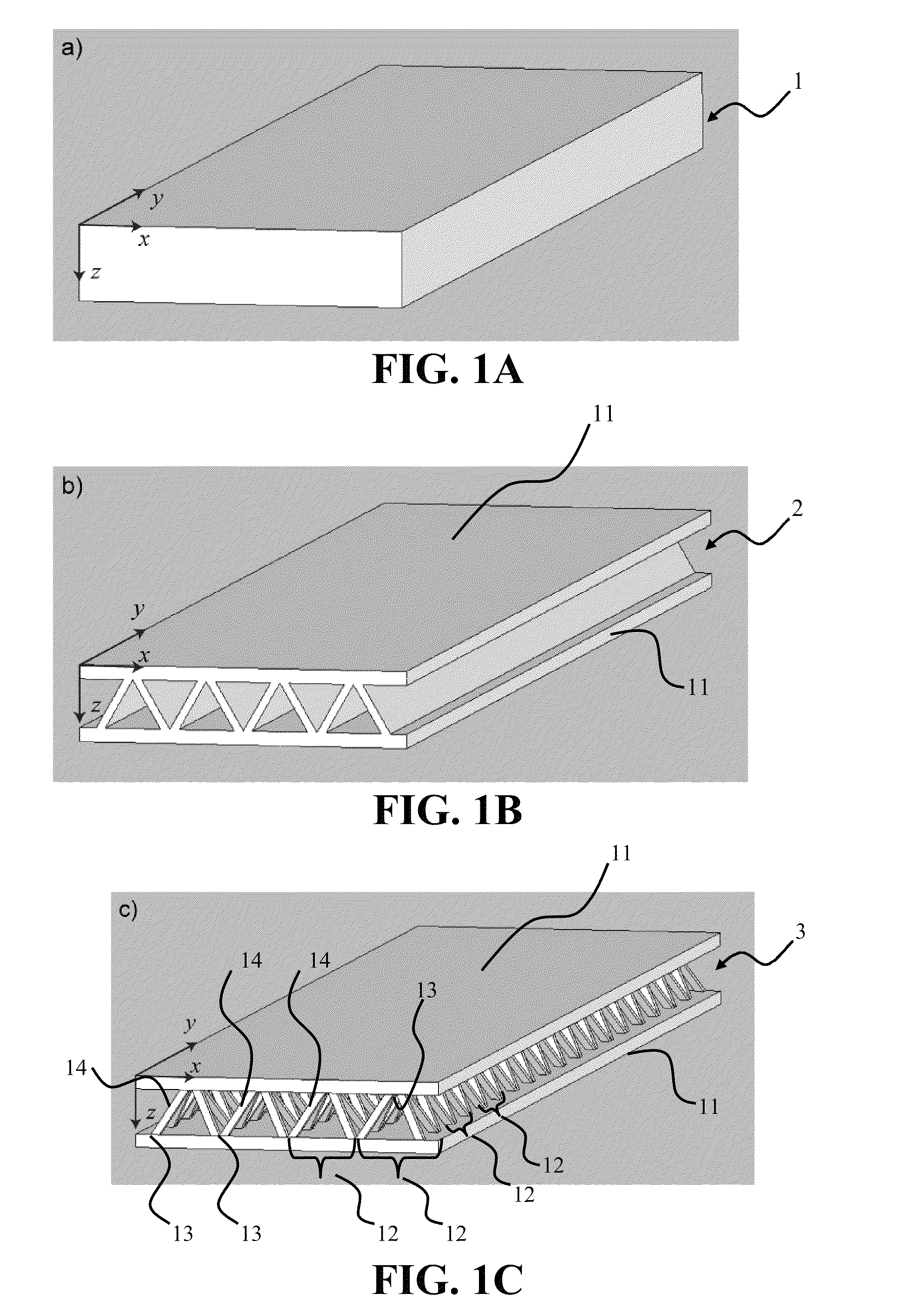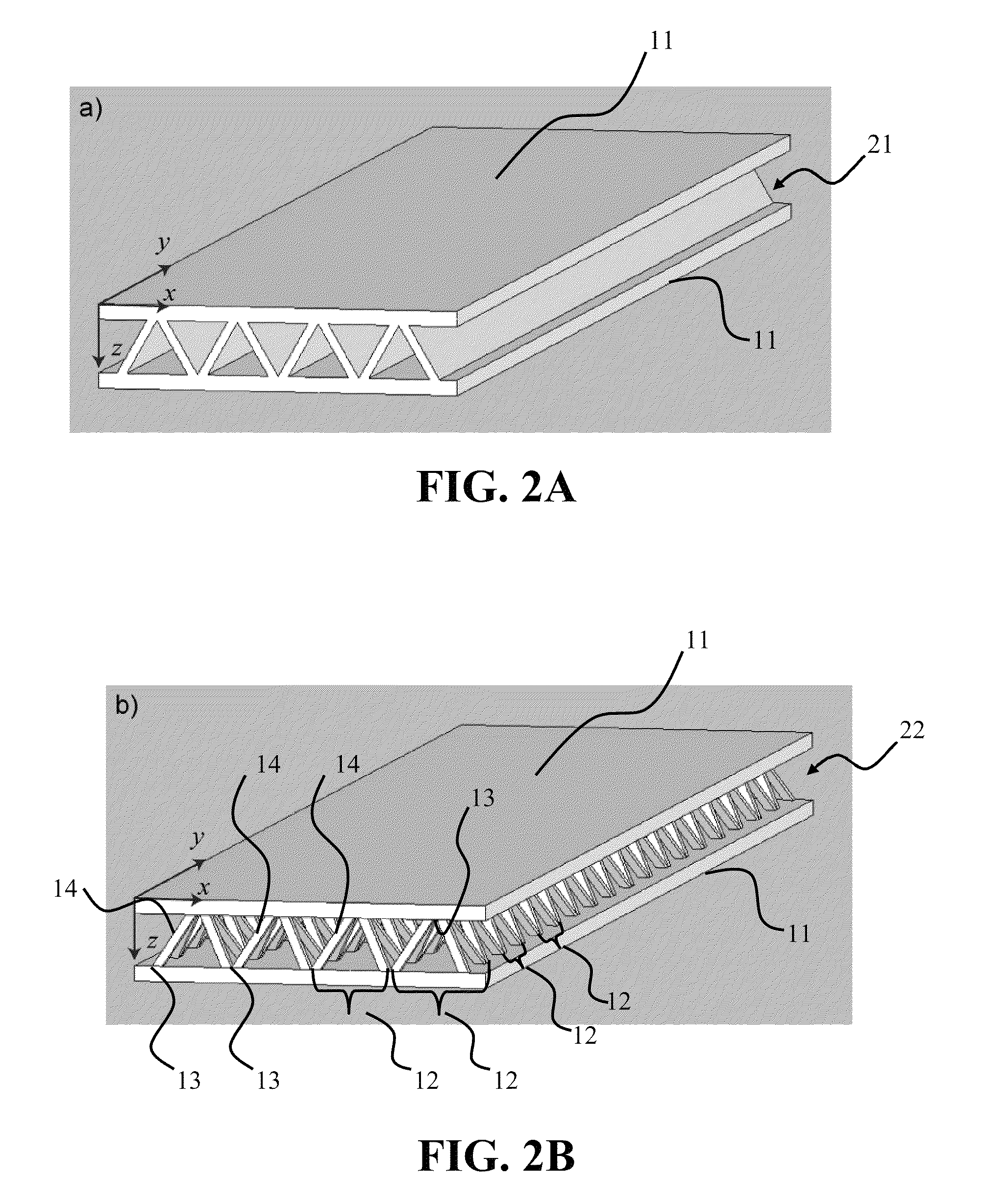Manufacture of lattice truss structures from monolithic materials
- Summary
- Abstract
- Description
- Claims
- Application Information
AI Technical Summary
Benefits of technology
Problems solved by technology
Method used
Image
Examples
example and experimental
Results
[0046]An aspect of an embodiment of this invention may comprise an extrusion and electro discharge machining (EDM) method has been developed to fabricate a pyramidal lattice core sandwich structure. The approach is readily extendable to tetrahedral and to multilayer versions of these lattices. In this approach, a 6061 aluminum alloy corrugated core sandwich panel is first extruded, creating an integral core and facesheets, fashioned from a single sample of material. The corrugated core (or any core shape as desired or required) is then penetrated by an alternating pattern of triangular shaped EDM electrodes normal to the extrusion direction to form the pyramidal lattice. The process results in a sandwich panel in which the core-facesheet nodes posses the parent materials' metallurgical and mechanical properties. The out-of-plane compression and in-plane shear mechanical properties of the structure have been measured and found to be very well predicted by analytical estimates....
PUM
| Property | Measurement | Unit |
|---|---|---|
| diameter | aaaaa | aaaaa |
| thickness | aaaaa | aaaaa |
| height | aaaaa | aaaaa |
Abstract
Description
Claims
Application Information
 Login to View More
Login to View More - R&D
- Intellectual Property
- Life Sciences
- Materials
- Tech Scout
- Unparalleled Data Quality
- Higher Quality Content
- 60% Fewer Hallucinations
Browse by: Latest US Patents, China's latest patents, Technical Efficacy Thesaurus, Application Domain, Technology Topic, Popular Technical Reports.
© 2025 PatSnap. All rights reserved.Legal|Privacy policy|Modern Slavery Act Transparency Statement|Sitemap|About US| Contact US: help@patsnap.com



